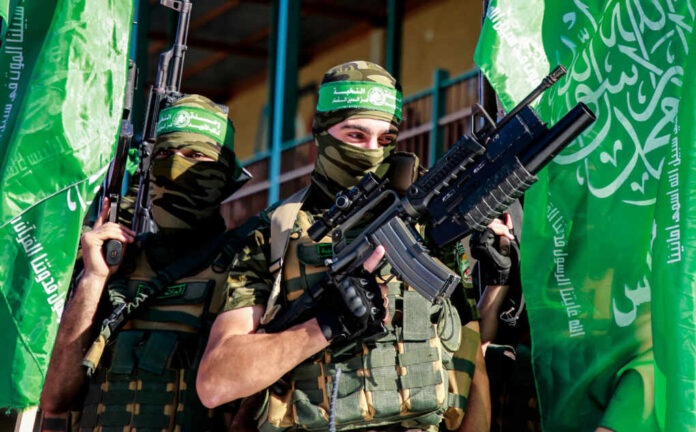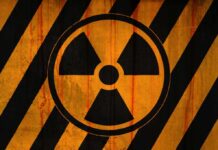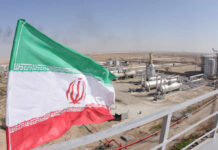
President Trump’s ultimatum to Hamas to disarm or face potential US military intervention has struck a chord, emphasizing a direct threat to a fragile ceasefire.
Story Snapshot
- Trump issues a stark warning to Hamas for disarmament.
- The ultimatum comes amid delicate peace negotiations.
- Hamas disarmament remains a critical challenge to peace.
- Potential US intervention could escalate regional tensions.
Trump’s Bold Stance on Hamas Disarmament
President Donald Trump has taken a decisive step in the ongoing Israel-Hamas conflict by demanding the disarmament of Hamas. His statement, “If they don’t disarm, we will disarm them. And it will be perhaps violently,” underscores the US’s assertive stance. This approach aims to dismantle the military capabilities of Hamas, which has been a persistent hurdle in achieving long-standing peace. The ultimatum is part of a broader peace initiative following a devastating two-year conflict in Gaza.
Watch: Trump: Hamas must disarm or be disarmed, perhaps violently
During a recent White House meeting with Israeli Prime Minister Benjamin Netanyahu, Trump stressed the importance of a phased peace plan. This plan includes a ceasefire agreement and initial steps toward Hamas disarmament. However, the specifics remain vague and contentious. As negotiations progress, the potential for US military intervention looms, should diplomatic efforts fail. Hamas’s response to this ultimatum will be a critical factor in determining the future of peace in the region.
🚨 Trump issues strong warning to Hamas: disarm now or be disarmed.
“If they don't disarm? We will disarm them… it will happen QUICKLY and perhaps VIOLENTLY.”
— David J Harris Jr (@DavidJHarrisJr) October 14, 2025
Historical and Political Context
The roots of the Israel-Hamas conflict trace back decades, with Hamas emerging as a dominant force in Gaza since the late 1980s. The group has maintained control over the region since 2007, engaging in repeated cycles of violence with Israel. The most recent escalation began with Hamas’s large-scale attack on Israel in October 2023. The ensuing war has left Gaza devastated, prompting international calls for peace. Currently, the Gaza Strip remains under blockade, with severe humanitarian conditions exacerbating the crisis.
The US, under Trump’s leadership, has positioned itself as a key player in mediating peace. This involves addressing complex issues such as Hamas’s military capabilities, Israeli security concerns, and the humanitarian crisis in Gaza. The ongoing negotiations, facilitated partly by Qatar, aim to establish a sustainable ceasefire and address the critical issue of disarmament, which past administrations have struggled to resolve.
Potential Impact of US Intervention
The implications of Trump’s ultimatum are significant. In the short term, there is potential for renewed violence if Hamas resists disarmament. The phased peace plan includes increased humanitarian aid and a partial Israeli withdrawal, which may alleviate immediate suffering in Gaza. However, the success or failure of Hamas’s disarmament will ultimately determine the prospects for lasting peace. The US’s credibility and influence in the region are also at stake, as is the potential precedent for future interventions in similar conflicts.
In the long term, the resolution of the Gaza conflict could reshape regional dynamics. The defense and security sectors may see increased activity, while humanitarian organizations mobilize for large-scale relief efforts. The stakes are high, and the world watches as Trump’s administration navigates this complex geopolitical landscape.
As negotiations continue, the international community remains hopeful yet cautious. The disarmament of Hamas is a contentious and unresolved issue, fraught with risk. The outcome of these efforts will not only impact the immediate stakeholders but also resonate throughout the region, influencing future diplomatic and military strategies.
Sources:
What Comes Next in the Israel-Hamas Ceasefire?
Jerusalem Post: Trump Warns Hamas

























